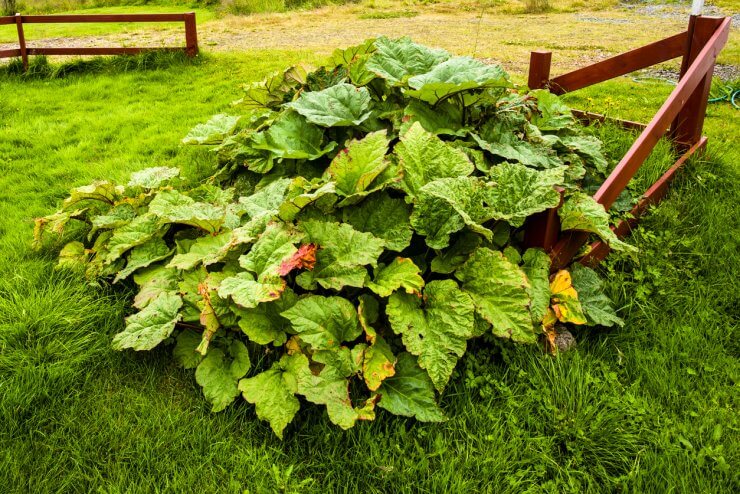
Rhubarb growing in the garden

Rhubarb growing in the garden
Rhubarb is bursting with vitamins, minerals, and disease-fighting compounds! Rich in antioxidants, rhubarb can protect your heart, reduce bad (LDL) cholesterol, lower your blood pressure, protect against cancer, and help control blood sugar. Rhubarb packs a lot of nutritious punch into just a few calories.
Here are some of the other ways rhubarb contributes to good health.
Heart Health
Anthocyanins in rhubarb contribute to heart health by reducing inflammation; they also prevent atherosclerosis (narrowing and hardening of the arteries). And eating rhubarb stalks could help reduce your cholesterol, too.
Athletic Boost
Research indicates that the nitrates in rhubarb improve the efficiency of the mitochondria—the energy-producing sector of your cells. This, in turn, can contribute to better athletic performance.
Inflammation Fighter
Rhubarb contains anthocyanins; that’s the compound that gives rhubarb stalks their red color. Anthocyanins also contribute to reducing inflammation in the body and may protect you from chronic diseases like diabetes.
Digestive Health
Rhubarb is packed with fiber. That fiber can feed friendly bacteria in your gut and also aid in an overall healthy digestive system, including the prevention of constipation. Fiber has also been linked to a reduction in the risk of chronic diseases, including colon cancer, heart disease, and type 2 diabetes.
Healthy Skin & Bones
The antioxidants in rhubarb provide a number of benefits—among them, the support of collagen production for brighter, firmer skin. And the vitamin K in rhubarb is an essential ingredient to improve bone density, which reduces your risk of fractures.
Healthy Weight
The high fiber and water content in rhubarb can make it part of a healthy diet. The only caveat here is that because of rhubarb’s tartness, many recipes also call for a hefty helping of sugar. Look for low-sugar recipes and/or eat rhubarb in moderation when you know it’s partnered with a lot of sugar.
Rhubarb Caution
Rhubarb is delicious—in pies, muffins, sauces, jams, and more. But always remember that only the stalks of rhubarb are edible. The leaves contain high levels of oxalic acid, which can be toxic to people and pets.
Did you know that rhubarb are so healthful? Please tell us your biggest reason for growing and eating rhubarb.



